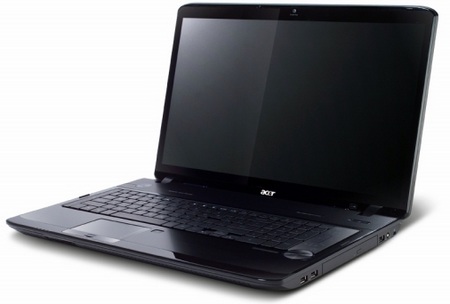Samsung announced its new STORY Station external hard drive with up to 1.5TB capacity. The STORY Station features a solid aluminum casing with a heat dissipating design that prevents heat build up and keeps the drive inside cool. Samsung has included Samsung Auto Backup, SecretZone and SafetyKey security features in the STORY Station. The drive uses USB 2.0 interface and is available in 500GB, 1TB and 1.5TB capacities. It will be released in May.
imageads
search

Samsung STORY Station 1.5TB Hard Drive
HP MediaSmart LX195 Atom-based Home Server
 HP is launching its new MediaSmart LX195 media server based on Atom platform. It is equipped with an Intel Atom 230 1.6GHz processoe, 1GB RAM and a 640GB 7200RPM SATA hard drive. It runs Windows Home Server and works with Apple Time Machine. No words yet on availability and pricing.
HP is launching its new MediaSmart LX195 media server based on Atom platform. It is equipped with an Intel Atom 230 1.6GHz processoe, 1GB RAM and a 640GB 7200RPM SATA hard drive. It runs Windows Home Server and works with Apple Time Machine. No words yet on availability and pricing.
Cooler Master HAF 922 Mid Tower Chassis
Cooler Master adds to its HAF (High Airflow Flow) line the HAF 922 mid tower chassis. This new chassis has a rugged look and offers massive air flow cooling. The HAF922 supports up to seven fans, including three 200mm fan for maximum airflow. The chassis offers five 5.25-inch and five 3.5-inch tool-free drive bays and 7+1 expansion slots. A well thought-out interior has become a trademark for Cooler Master chassis. Starting with a CPU cooler retaining hole that was first introduced in the ATCS 840, it allows for quick installation of CPU cooler without removing the motherboard. Unbeatable cable management makes for less clutter and system maintenance. Tool-free 5.25” and 3.5” drive bays for easy in-and-out. A 7+1 PCI slot for added expandability and a spacious interior to house all types of high-performance hardware.
AMD ATI Radeon HD 4770 40nm GPU
AMD announced the AMD ATI The Radeon HD 4770 has aso support for HDMI, picture-in-picture (PiP) and of course DirectX 10.1. The new GPU will be launched with a price as low as $99.

Microsoft Surface The Magic The Power The Possibilitie
MSI X-Slim X340-021US Listed, Priced
MSI officially listed its X-Slim X340-021US ultra slim notebook on its website. The X340 is priced at $1099.99 and will be available soon.
Intel Vs AMD processor
Intel DX58SO Motherboard
Buffalo HDS-CU2 External Hard Drive with AES128 encryption

Buffalo announced the HDS-CU2 series external hard drive that offers automatic AES128bit (Advanced Encryption Standard) encryption. The HDS-CU2 uses USB 2.0 interface. It is available in 640GB (HDS-C640U2) and 1TB (HDS-C1.0TU2) capacities.
Samsung to offer self-encrypting SSDs
Samsung and Wave System have partnered to offers the industry’s first self-encrypting SSDs. These new SSDs will feature Full disk encryption (FDE) with Wave’s EMBASSY management software. Samsung’s new self-encrypting SSDs will automatically encrypt information as it’s saved to the drive. These SSDs come in both 1.8-inch and 2.5-inch form factor and are available in 64GB, 128GB and 256GB capacities.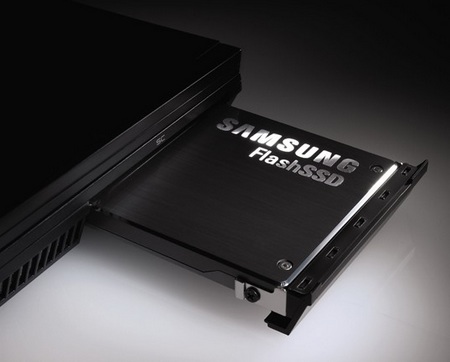
HP Pavilion dv3510nr Notebook Reviewed
HP Pavilion dv3510nr is a 13.3-inch notebook PC that can be configured with Intel or AMD platform. NotebookReview has tested the notebook. The reviewed unit is powered by an Intel Core 2 Duo P7350 2GHz processor, 4GB RAM, 320GB hard NotebookReview’s comments: The HP Pavilion dv3510nr could be an impressive notebook given its features which include an Intel Core 2 Duo processor, NVIDIA 9300M GS graphics, and backlit keyboard inside a 13.3” chassis. What we got was a notebook that had some quality control issues, with a bowed, separating keyboard and a squeaky, flexible chassis. For almost $1,000 we expect a higher level of quality for a notebook. If the cost of the dv3510nr was between $500 and $600 some of the problems could be overlooked. On that note, HP currently offers the AMD-equipped dv3z for $679.99 if you are looking for an alternative to the Intel configuration.


3DConnexion SpacePilot Pro 3D Mouse
3DConnexion introduces the new SpacePilot Pro, a professional 3D mouse that include the six-degrees-of-freedom (6DoF) sensor offering “smooth and intuitive 3D navigation”.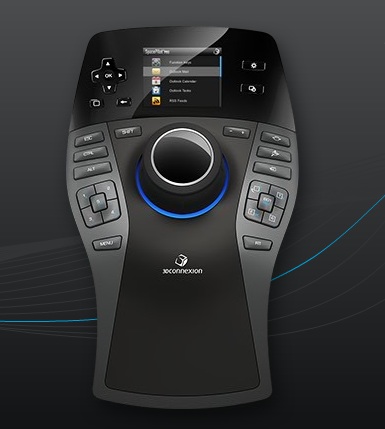
Acer Veriton M265, M421G and M670G Business Desktop PCs
Acer brings new design features to its popular Veriton line of business desktops. These new design elements can be found on Acer’s new Veriton M265, Veriton M421G and Veriton M670G desktops. These new PCs have open air vents on the front of the system for better ventilation, a hinged/cable-less front bezel so users can open the entire chassis for upgrades easily.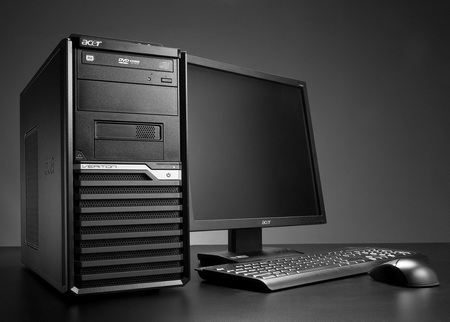
Intel® Desktop Board DP45SG
Welcome to the extreme performance platform brought to you by Intel® Desktop Board DP45SG, supporting the Intel® Core™2 Extreme processor with up to 1333 FSB. Built in the full size ATX, this board comes with dual PCI Express* (PCIe) 2.0 x16 graphics connectors, DDR-3 1333 support and overclocking capabilities. Intel® Desktop Board DP45SG will take your gaming experience to a higher level.
Intel Desktop Board DP45SG supports Dolby Home Theater* and is Microsoft Windows Vista* Premium WHQL certified.
Intel® Desktop Board DX58SO
The Intel® Desktop Board DX58SO is designed to unleash the power of the all new Intel® Core™ i7 processors with support for up to eight threads of raw CPU processing power, triple channel DDR3 memory and full support for ATI CrossfireX* and NVIDIA SLI* technology. Today’s PC games like Far Cry 2* need a computing platform that delivers maximum multi-threaded CPU support and eye-popping graphics support.
Intel Tweaks Atom Netbook Designs for China
 Image via CrunchBase
Image via CrunchBase
Intel is expanding its cooperation with small Chinese PC makers as it offers partners netbook designs tweaked for niche customers in China.
The designs are part of a program targeting small PC manufacturers that aims to tap new markets for Intel's Atom microprocessor in netbooks, or ultra-portable notebooks, an Intel spokesman said Tuesday.
The program, called Hurdle, offers designs that meet specific price targets and the hardware and software requirements of Intel's Chinese partners, the spokesman said.
The designs are based on Intel's 1.6GHz Atom N270 processor and are intended for netbooks running Linux with 8.9-inch or 10.2-inch screens and priced as low as 1,750 yuan (US$256), according to Chinese media reports.
Intel sees netbooks as a "significant opportunity" in China and elsewhere, said Anand Chandrasekher, senior vice president and general manager of Intel's Ultra Mobility Group, speaking at the Intel Developer Forum in Beijing last week.
Intel is following an industry trend by turning to small Chinese manufacturers to boost its sales in a troubled economy, said Simon Ye, an analyst at Gartner.
Small Chinese PC makers have a tarnished image and are known in local slang as "mountain stronghold" firms for quality problems and generic brand names one might expect of companies found in undeveloped areas.
That reputation discouraged hardware providers from dealing with the firms until the recent rise of netbooks made low-cost products essential, Ye said. PCs from small manufacturers in China sell best to cost-sensitive consumers often outside of booming coastal cities.
But "mountain stronghold" netbooks doing well in the recession may not remain popular in China for long, Ye said. Users will still be willing to pay more for a netbook from another firm if quality issues afflict the small brands, he said.
SandForce SF-1000 SSD Processor
SandForce announced the SF-1000 SSD processor family, which is designed to build SSDs that deliver better performance. The SF-1000 SSD processor features SandForce’s DuraClass technology that “deliver world-class SSD reliability, performance, and power efficiency that differentiate SandForce SSD Processors from standard flash controllers”. The SandForce SF-1000 supports both MLC and SLC flash-based SSDs. It offers a standard 3 gigabit-per-second SATA host interface connecting up to 512 gigabytes of commodity NAND flash memory. It delivers 30K IOPS (random 4K read or write transfers), and 250MB/s performance (sequential 128KB read or write transfers) with 100 micro-second latency.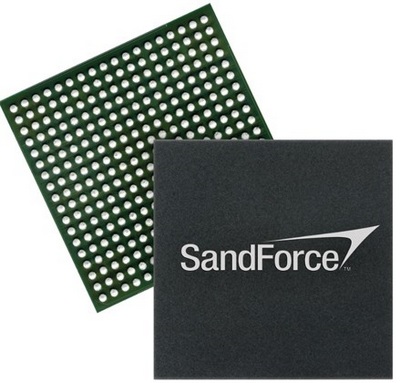
PC Koubou Lesance Monster Hunter Notebook
Japanese PC maker, PC Koubou, has partnered with Capcom to launch the new Monster Hunter-themed Lesance BTO GSN628GW TYPE-R-MHF notebook PC. Powered by an Intel Core 2 Duo P8600 2.53GHz processor, the Monster Hunter notebook has 2GB RAM, 250GB hard drive and a NVIDIA GeForce 9600M G graphics with 512MB RAM. The laptop comes with also DVD burner and WiFi 802.11a/b/g/n. It has Monster Hunter game pre-installed. The price is 129,800 Yen.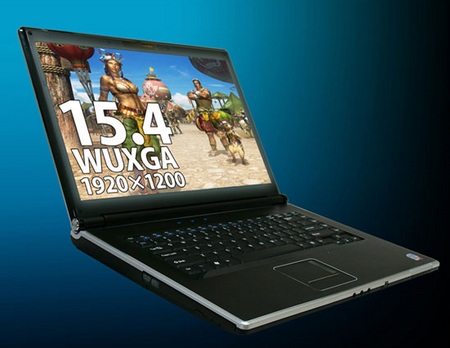
Corsair S256 2.5-inch 256GB SSD
 After the 128GB S128 SSD, Corsair is going to release its new S256 2.5-inch 256GB Solid State Drive that is based on Samsung’s Flash memory and Samsung S3C29RBB01-YK40 controller. Like the S128, Corsair S256 uses SATA 3.0Gb/s interface. It has 64MB cache memory.
After the 128GB S128 SSD, Corsair is going to release its new S256 2.5-inch 256GB Solid State Drive that is based on Samsung’s Flash memory and Samsung S3C29RBB01-YK40 controller. Like the S128, Corsair S256 uses SATA 3.0Gb/s interface. It has 64MB cache memory.
Multi-core processing offers a means to break through the limitations of clock frequency scaling in order to deliver increased performance. Two or more cores in a processor allows for more performance while reducing power consumption per unit of work. This increased efficiency is achieved through the execution of multiple simultaneous tasks on separate cores for load balancing, security, virus protection, vector processing, etc. As a result, PCs, workstations, notebooks and servers can take advantage of efficient processing power to simultaneously run foreground applications and graphics processing while doing multi-stream HD media compression and decode, maintenance and anti-virus work in the background.
Realizing the benefits of multi-core operation requires increased memory bandwidth. Unless bandwidth is scaled commensurately with processor power, cores will be memory starved and performance will suffer. Furthermore, future memory bandwidth requirements are expected to increase dramatically. With three or more foreground applications running at 6.4 GB/s each, graphics processing at 25.6 GB/s, vector processing at 25.6 GB/s, plus media decode and encode, security and anti-virus, PC bandwidth requirements can exceed 100 GB/s.
he Rambus XDR™ memory architecture is well positioned to meet the bandwidth requirements of multi-core processors now and in the future. Current high-volume production XDR DRAM can already provide single-device bandwidths of 8 GB/s. Just two XDIMMs containing a total of 16 XDR devices could deliver total memory bandwidth of 128 GB/s. And the XDR architecture has a roadmap to device bandwidths of 32 GB/s and beyond with XDR2 DRAM. XDR memory offers the added benefit of increased signal integrity through differential signaling and easier board design with Rambus innovations such as FlexPhase™ circuit technology.
Multi-core technology is the next step in the evolution of computing. And with the XDR memory architecture, designers can unleash the power of multi-core processors.

For performance that adapts to your application demands, intelligently scales energy use per performance demands, and offers best-in-class virtualization, turn to a more intelligent enterprise server processor—the Intel® Xeon® processor 5500 series—automatically and intelligently adjusting server performance according to your application needs.
Product information
Product briefs
- Intel® Xeon® processor 5500 series
File Type/Size: PDF 1.22MB
- Intel® Xeon® processor 5400 series
File Type/Size: PDF 6.07MB
- Intel® Xeon® processor 5300 series
File Type/Size: PDF 534KB
- Compare Intel® Xeon® processor features
- Interact with IT experts in the server zone community
- ROI analysis: Use the Intel® Xeon® processor server estimator
View the demo

Go inside the latest innovations in Intel® Turbo Boost Technology, Intel® QuickPath Technology, and Intel® Hyper–Threading Technology.
Live online seminar
Join industry experts for a live webinar showcasing breakthrough features of the new Intel® Xeon® processor.
IT center
Intel® Xeon® processor-based servers are the best in class for virtualization, energy efficiency, and performance
Features and benefits of the Intel® Xeon® processor 5500 series
| Next-generation Intel® microarchitecture |
|
|---|---|
| Intel® Turbo Boost Technology |
|
| Intel® Intelligent Power Technology |
|
| Integrated power gates |
|
| Intel® Virtualization Technology (Intel® VT)± |
|
| Intel® Virtualization Technology FlexMigration |
|
| Intel® 64 architectureΦ |
|
| DDR3 memory support up to 1333 MHz |
|
| Intel® I/O Acceleration TechnologyΔ (Intel® I/OAT) |
|
| Enhanced reliability and manageability |
|
Intel has revealed two more chips in its popular Atom range, and is looking to paper the world with a billion mobile internet devices
At its developer forum in Beijing, Intel has unveiled two more chips in its popular Atom range, which is now just a year old. The Z550 takes the clock speed up to 2GHz with Hyperthreading (HT) support, which compares with the 1.6GHz of the N270 version most commonly used in today's netbooks. Average power consumption is 220mW, with 100mW idle power.
The Z515 is an 800MHz-to-1.2GHz chip that delivers "performance on demand" using Intel's Burst Performance Technology (Intel BPT). Average power consumption is 160mW, with 80mW idle power.
Atom performance is mediocre in comparison to Core 2 Duo and Core 2 Quad designs. However, the low power requirements can provide long battery life in netbooks, and get Intel into areas of the market previously dominated by devices running ARM-based processors.
Anand Chandrasekher, general manager of Intel's Ultra Mobility Group, said Atom chips would support Windows 7 Starter and Basic editions in the second half of this year, as well as XP Home and Vista Basic. He also said Intel's next-generation MID (mobile internet device) platform, codenamed Moorestown, was scheduled to appear "by 2010". Intel says:
Moorestown consists of a System on Chip (codenamed "Lincroft") that integrates a 45nm Intel® Atom processor core, graphics, video and memory controller. The MID platform also includes an input/output (I/O) hub, codenamed "Langwell," that includes a range of I/O blocks and supports various wireless solutions.
The System on Chip approach should reduce manufacturing costs for netbooks and MIDs, while allowing designers to create smaller systems.
A typical MID should have a 4 inch to 7 inch screen and no keyboard, which is the area between smart phones and netbooks. It's an area Microsoft targeted with its Origami UMPC (ultramobile PC) project early in 2006. It is an understatement to say this was not a success.
cer introduces three new Aspire notebook PCs, including 18.4-inch 8935, 15.6-inch 5935 and 13.3-inch 3935. All of these new notebooks are powered by Intel’s Core 2 Duo 

Both 8935 and 5935 supports WiFi 802.11b/g/n supporting Acer SignalUp with Nplify wireless technology, WiMAX and Bluetooth 2.0 connectivity. 3G option is also available. They all have Acer Crystal Eye webcam.
(Edit post, Set to draft, Slurp)
 It's been a year since Intel fired the opening salvo against regular-size laptopping with its Atom processor. Now, the Z series gets its expected speed bump, and at the bottom end, a low-power MID-oriented model.
It's been a year since Intel fired the opening salvo against regular-size laptopping with its Atom processor. Now, the Z series gets its expected speed bump, and at the bottom end, a low-power MID-oriented model.
The Atom Z550 takes the Atom to heretofore unseen speeds of 2.0GHz, while maintaining a sub-3W power envelope. Obviously, this speed gain is a good thing, but our enthusiasm is dampered by the fact that this is based on familiar, unexciting tech; the Z series "Silverthorn" processors may be power-thrifty and capable, but their architecture hasn't changed much with the new processors. A speed bump and the addition of hyperthreading are appreciated, but these marginal boosts won't be game changers.
On the other side of the performance spectrum, the Z515 winds the processor clock way down. Intel claims that Intel Performance Burst Technology "enables the processor to run at 1.2GHz when performance is needed", scaling up from an idle speed of 800MHz. The Z series processors were originally intended for low power applications like MIDs, and although the Z550 will likely make its way to netbooks, the Z515 is comfortable right where it is, thanks.
But as I've said, these aren't a huge step for Intel, and won't make a massive difference to consumers. For that, you'll have to wait for the new Moorestown platform, based around the 45nm "Lincroft" Atoms, a prototype of which Intel broke out at the conference, just to tease us. Full presser below.For more details
RAmos is launching this month its three “Terminator” TNT series PMPs. The three series are 7-inch TNT 7, 5-inch TNT5 and 4.3-inch TNT X. These new PMPs will be powered by Rockchip RK2806 chipset. They can handle HD video playback as well as music plyaback and image viewing.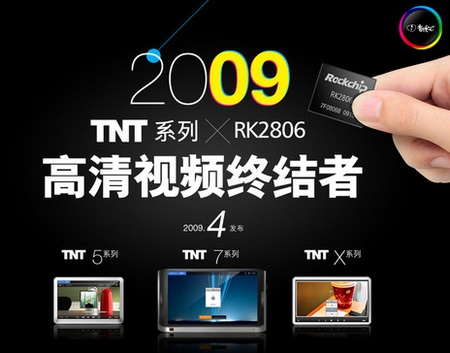
[zol]
Sanwa Japan offers the ADR-EXCF, an Express card 34/54 dual interface CF adapter that comes with UDMA Mode 6 support. The ADR-EXCF support dual interface and up to 16GB UDMA Compact Flash, up to 32GB Type I CF, up to 8GB Type II CF and up to 6GB Micro Drive. Sanwa ADR-EXCF CF adapter offers up to 45MB/s transfer rate. It works with both Windows PC and Mac. The price is 7140 Yen.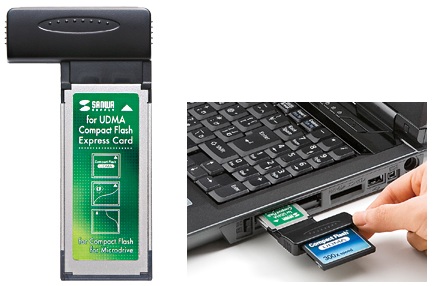
[sanwa]
Gigabyte has posted the product page of its TouchNote T1028 tablet netbook. The TouchNote T1028 is powered by an Intel Atom N270 1.6GHz or a N280 1.66GHz (T1028P) processor, 1GB of RAM, 160GB hard drive and integrated video chipset. The T1028 has a 10.1-inch 1024×600 LCD display (T1028M/G has LED-backlit), a 1.3 Megapixel webcam, Bluetooth 2.1 and WiFi 802.11b/g/n connectivity. The T1028G model will include also embedded HSDPA module. WiMAX option is also available.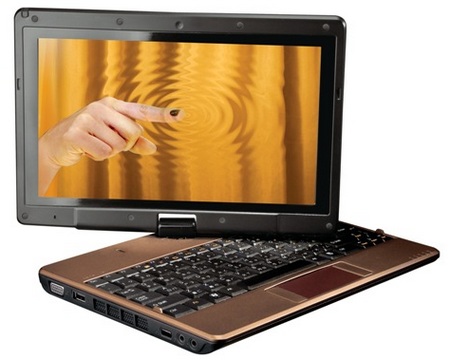
[gigabyte]

![Reblog this post [with Zemanta]](http://img.zemanta.com/reblog_e.png?x-id=8503cdcf-2591-4f80-8c19-05eadef37981)
![Reblog this post [with Zemanta]](http://img.zemanta.com/reblog_e.png?x-id=75db0f69-e731-4433-99c0-c2a32cb7083f)
![Reblog this post [with Zemanta]](http://img.zemanta.com/reblog_e.png?x-id=7c10c2f2-b306-45a2-8ca2-134573a5f695)
![Reblog this post [with Zemanta]](http://img.zemanta.com/reblog_e.png?x-id=85285965-6475-4f0a-b157-8bce0d22f9d2)
![Reblog this post [with Zemanta]](http://img.zemanta.com/reblog_e.png?x-id=1091865d-f4f4-40da-8546-2e1b6a1afa4d)
![Reblog this post [with Zemanta]](http://img.zemanta.com/reblog_e.png?x-id=d79ddbaa-c5eb-4f83-a7da-21aa5cfd899c)
![Reblog this post [with Zemanta]](http://img.zemanta.com/reblog_e.png?x-id=7e2b3dd9-7412-482c-a2d3-0e7994ab16cb)
![Reblog this post [with Zemanta]](http://img.zemanta.com/reblog_e.png?x-id=f02cf2ec-31e9-4404-b67b-64b27012cd6e)
![Reblog this post [with Zemanta]](http://img.zemanta.com/reblog_e.png?x-id=fa2e02a8-b4a2-4396-998e-6bf79a7cbc9c)
![Reblog this post [with Zemanta]](http://img.zemanta.com/reblog_e.png?x-id=7973a8be-f70b-4dff-9c4c-c9369a2f4600)
![Reblog this post [with Zemanta]](http://img.zemanta.com/reblog_e.png?x-id=725ac0ed-8e67-4ee5-a538-94fea28bf65d)
![Reblog this post [with Zemanta]](http://img.zemanta.com/reblog_e.png?x-id=261d1020-fcbd-4411-817d-0fb60d4090dc)
![Reblog this post [with Zemanta]](http://img.zemanta.com/reblog_e.png?x-id=3bd632d4-b5f2-4bbf-a16a-c8c266119627)
![Reblog this post [with Zemanta]](http://img.zemanta.com/reblog_e.png?x-id=43865871-a7ef-46df-be69-49b31c1b5f55)

![Reblog this post [with Zemanta]](http://img.zemanta.com/reblog_e.png?x-id=e337a274-eed0-418b-880b-e1db41450791)

![Reblog this post [with Zemanta]](http://img.zemanta.com/reblog_e.png?x-id=1b7920c4-4754-447a-8a39-d4ae120630a3)
![Reblog this post [with Zemanta]](http://img.zemanta.com/reblog_e.png?x-id=5bafd9f2-6bf5-414e-b196-b408d8248c56)
![Reblog this post [with Zemanta]](http://img.zemanta.com/reblog_e.png?x-id=1dd0cf5f-e26d-404f-80c5-52251ac76508)
![Reblog this post [with Zemanta]](http://img.zemanta.com/reblog_e.png?x-id=ee5082e7-d9e2-4023-958c-4b9639749aa2)
![Reblog this post [with Zemanta]](http://img.zemanta.com/reblog_e.png?x-id=713cfb75-4a79-4832-843e-0eb332e7c60d)

